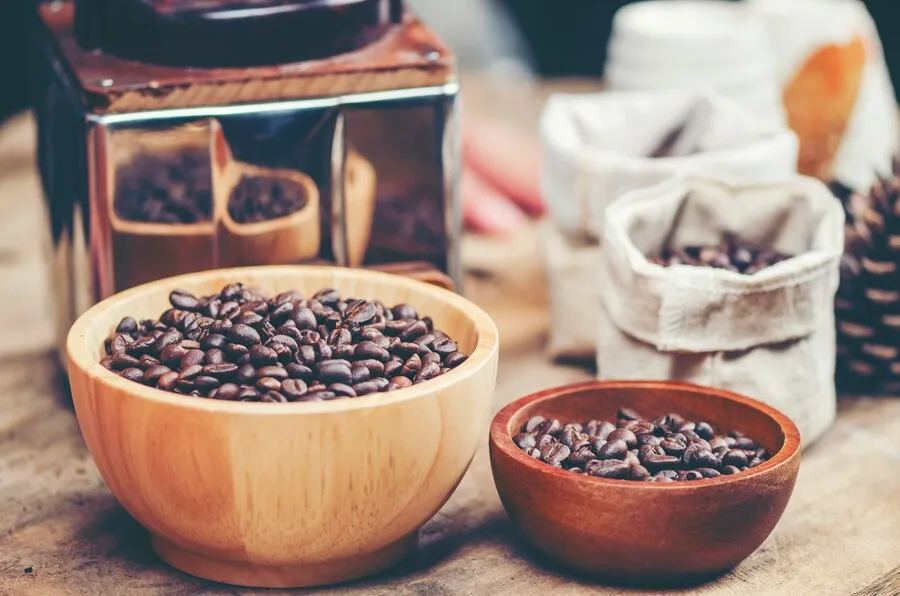The simple joy of sipping a warm cup of coffee every morning is the final note in a complex symphony of processes that convert a humble bean into the beloved beverage we know and adore. The story of gourmet ground coffee is a tale steeped in tradition, innovation, and skill. By delving into the intricacies of coffee production, coffee lovers can deepen their understanding and appreciation for every sip they take, celebrating the global journey that spans continents and cultures.
Key Takeaways
- Understanding the detailed process from bean to brew enriches the coffee experience.
- The quality of coffee is profoundly affected by its treatment at each production stage.
- Optimal harvesting, processing, roasting, and grinding are essential for creating premium ground coffee.
- Techniques in brewing and tips for storage can elevate the enjoyment of coffee at home.
The Origins of Coffee Beans
The story of every coffee bean starts with its birthplace—the vast and varied terrains known as the Coffee Belt. Here, the beans grow under a canopy of tropical conditions, which include a precise harmony of rain, wind, sun, and soil composition. You’ll find a spectrum of coffee plants in this belt, each offering diverse flavors determined by their specific microclimate. The journey of coffee is as much a story of place as it is one of taste.
Farmers in these regions possess intimate knowledge of their environment, allowing them to cultivate plants that yield the highest quality beans. The farming techniques inherited through generations and adapted over time are as crucial to the quality of the brew as the bean itself. The farmers’ commitment to the land ensures a sustainable future for coffee. At the same time, their attention to detail provides the foundational quality distinguishing a mundane cup of coffee from a remarkable one.
Harvesting: Picking the Beans at Their Peak
Harvest season is a critical window in the life cycle of coffee. Success hinges on the accurate timing of the harvest—a meticulous exercise of observing the cherries for the extravagance of color, indicating optimum ripeness. These cherries house the seeds, which will eventually be processed into the beans we cherish. The ideal harvest captures the essence of the bean: a delicate balance of sweetness, acidity, and potential flavor that only the right moment of picking can secure.
The method of harvesting varies across regions and farms. Some rely on the traditional handpicking approach, which ensures precision but requires significant labor. Others may choose mechanical means to harvest more efficiently, sometimes compromising the selection process. The main aim is to preserve the beans’ integrity and prevent damage, as this could lead to spoilage or an undesirable alteration in the flavor during roasting.
From Fruit to Bean: Processing Coffee Cherries
The transition from cherry to bean is a transformative process where the potential for greatness is realized or squandered. The cherries undergo precise methods of processing—wet or dry—to remove the fruit flesh from the seeds. The chosen method significantly influences the future flavor profile of the coffee, laying the groundwork for the sublime flavors that might emerge during brewing. The wet method involves fermenting and washing the beans, giving them a clean and consistent taste, while the dry method allows the beans to sun-dry with the fruit on, which can impart a richer, more robust flavor.
At this juncture, research exemplified by sources underlines the significant impact processing has on the coffee’s ultimate flavor profile. The meticulousness of this step cannot be understated—it is akin to setting the foundation for the complexities, subtleties, and potential for exquisiteness within each bean.
Drying and Milling: Preparing Beans for Roasting
Proper drying is indispensable to preserving the integrity of the flavor. Inadequate drying can instigate mold growth or cause the beans to ferment, negatively influencing the taste. Expert drying, typically under the sun, ensures that the beans maintain a uniform moisture level, vital for achieving consistency during roasting. This critical stage invites patience as the beans lay spread out over large areas, basking under the sun’s heat, which coaxes them toward perfection.
The process concludes with milling, an equally important task that strips away the beans’ dried husks and prepares them for the market or the roaster. Through hulling and polishing, any remaining impurities are removed, and the beans are sorted by quality—a critical step toward determining their final destination in the cups of discerning coffee enthusiasts worldwide.
The Art of Roasting Coffee
Roasting is where magic alights—the green beans’ potential is actualized through heat and time. The beans darken during this complex chemical process and develop rich flavors and inviting aromas. Each variety of beans responds differently to roasting, carefully adjusting the time and temperature to extract the ideal flavor profile. This delicate balancing act ensures that the nuanced tastes of the coffee’s origin are preserved while new, captivating flavors are introduced.
The roaster’s expertise is pivotal; their precision and timing allow the coffee bean to reach its zenith. From the light, acidic tang of a lightly roasted bean to the deep, bitter richness of a dark roast, each adjustment in the roasting process spawns an entirely new and unique sensory experience.
Grinding the Beans: An Essential Step for Freshness
For those pursuing the pinnacle of coffee flavor, grinding coffee before brewing is non-negotiable. When ground, coffee beans are at their most vulnerable, exposed to the elements that can steal away their inherent aromas and tastes. Therefore, grind size matters immensely and requires attentive adjustment based on the brewing method of choice. The goal is to maximize the surface area for even extraction without compromising the bean’s delicate flavors. A uniformly ground batch of coffee ensures that water can flow through the coffee bed evenly, extracting the desired flavors without overemphasizing bitterness or acidity. To achieve this ideal grind, coffee connoisseurs may employ burr grinders, which are renowned for their consistency and precision—a small investment for the substantial upgrade in brewing that they facilitate.
Brewing Perfection: Techniques and Variables
The final and most personal phase in the coffee journey is brewing. It is where individual preference plays a defining role in crafting the ultimate cup. The brewing process invites experimentation with variables—the grind size, the water temperature, the saturation process, and brewing time—to extract the full spectrum of flavors from the coffee beans. Whether through the pressurized dance of an espresso, the slow caress of a pour-over, or the steeping grace of a French press, each method nurtures different aspects of the beans to life. Mastering the complex dance of coffee brewing allows one to customize their experience, adjusting each parameter to align with personal taste and uncover newfound dimensions within a seemingly familiar brew. With every cup, coffee drinkers invite a unique expression of the bean’s journey into their lives, one that is rich with the stories of its past and ripe with possibility.
Packaging and Distribution: Maintaining Quality
Once the coffee has been carefully harvested, processed, dried, milled, roasted, and ground, it must be packaged to shield it from the detrimental effects of air, moisture, and light. Contemporary methods have made possible novel packaging ideas that increase coffee’s shelf life. To preserve the coffee’s freshness and avoid oxidation, which could mute its flavors, foil bags with one-way valves, for instance, let gases escape without allowing air in. The journey from the hands of the roaster to the homes of the coffee enthusiast is laced with potential pitfalls for freshness and flavor. As such, attention to packaging details is pivotal for ensuring that when you purchase a bag of coffee, you receive it as it was intended to be savored—full of aroma, rich in flavor, and brimming with the spirit of its origins.
Enjoying Your Cup: Tips for the Perfect Brew at Home
Lifting your coffee experience to its highest potential continues beyond the selection of your beans. Optimal enjoyment also hinges on how you store them—away from excessive air, light, and moisture. Such precautions ensure your beans remain as pristine as possible until brewing. When it’s time to brew, grinding the beans and preparing your coffee with a mindful, refined approach can act as a grounding and meditative daily ritual, enriching the experience even further.
Finally, immerse yourself in tasting, informed by each bean’s heritage and journey. Pause to consider the hands that planted and picked the coffee, the sun that nurtured it, and the earth that cradled it, making each sip a moment of gratitude and connection. Uncover variety in coffee by experimenting with different brewing techniques or bean origins, as recommended by National Geographic’s exploration of how environmental conditions affect coffee’s taste. This exploration can lead to an ever-deeper appreciation for this beloved beverage.



